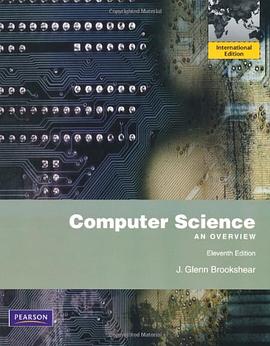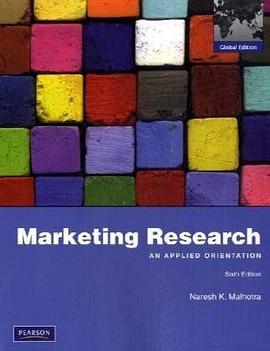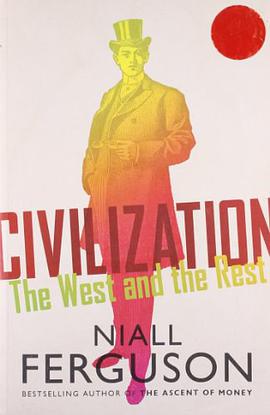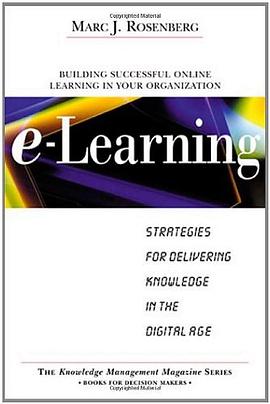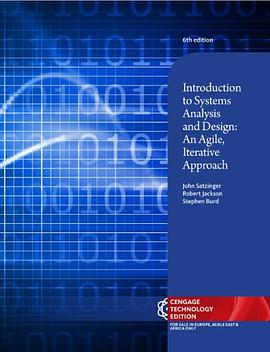2014
浪潮之巅(第2版)(套装上下册) 豆瓣
8.9 (13 个评分)
作者:
吴军
人民邮电出版社
2013
- 7
一个企业的发展与崛起,绝非只是空有领导强人即可达成。任何的决策、同期的商业环境,都在都影响着企业的兴衰。《浪潮之巅》不只是一本历史书,除了讲述科技顶尖企业的发展规律,对于华尔街如何左右科技公司,以及金融风暴对科技产业的冲击,也多有着墨。此外,这本书也着力讲述很多尚在普及或将要发生的,比如微博和云计算,以及对下一代互联网科技产业浪潮的判断和预测。因为在极度商业化的今天,科技的进步和商机是分不开的。
诚如作者所言:“人的商业知识和眼光不是天生的,需要不断地、有心地学习。经过多年的学习、思考和实践,我认定这样一个规律,就是:科技的发展不是均匀的,而是以浪潮的形式出现。每一个人都应该看清楚浪潮,赶上浪潮,如此,便不枉此生。”
诚如作者所言:“人的商业知识和眼光不是天生的,需要不断地、有心地学习。经过多年的学习、思考和实践,我认定这样一个规律,就是:科技的发展不是均匀的,而是以浪潮的形式出现。每一个人都应该看清楚浪潮,赶上浪潮,如此,便不枉此生。”
Computer Science 豆瓣
作者:
J. Glenn Brookshear
Pearson Education
2011
- 8
Business Intelligence in E-Learning-Systemen 豆瓣
作者:
Tobias Bluhm
W3L GmbH
2009
- 7
历史的惯性 豆瓣
作者:
阎学通
中信出版社
2013
- 7
历史就是一种客观世界运动发展的过程。看透这个世界,你需要有一种历史惯性的思维。
这是一部预测10年内国际格局发展趋势的作品。未来十年,中国能否成为超级大国?东亚能否取代欧洲成为世界中心?欧盟、俄罗斯、日本将风采尽失?“金砖国家”将成为历史? 中国应放弃不结盟政策吗?中国应采取何种外交方式?中国的周边国家,孰敌、孰友?中国该以何种思想引领世界?
本书深刻对比、剖析了中美未来十年的实力变化,提出了2023年世界将出现中美两个超级大国,两极格局也随即形成的大胆预测,同时还将世界主要大国未来十年的发展走势进行深入阐述,探讨了两极格局形成的必然性。作者还结合国内情势以及中国政策的发展方向,提出了独到的观点以及切实可行的政策建议。
这是一部预测10年内国际格局发展趋势的作品。未来十年,中国能否成为超级大国?东亚能否取代欧洲成为世界中心?欧盟、俄罗斯、日本将风采尽失?“金砖国家”将成为历史? 中国应放弃不结盟政策吗?中国应采取何种外交方式?中国的周边国家,孰敌、孰友?中国该以何种思想引领世界?
本书深刻对比、剖析了中美未来十年的实力变化,提出了2023年世界将出现中美两个超级大国,两极格局也随即形成的大胆预测,同时还将世界主要大国未来十年的发展走势进行深入阐述,探讨了两极格局形成的必然性。作者还结合国内情势以及中国政策的发展方向,提出了独到的观点以及切实可行的政策建议。
Pattern Recognition and Machine Learning 豆瓣 Goodreads
Pattern Recognition and Machine Learning (Information Science and Statistics)
9.8 (19 个评分)
作者:
Christopher Bishop
Springer
2007
- 10
The dramatic growth in practical applications for machine learning over the last ten years has been accompanied by many important developments in the underlying algorithms and techniques. For example, Bayesian methods have grown from a specialist niche to become mainstream, while graphical models have emerged as a general framework for describing and applying probabilistic techniques. The practical applicability of Bayesian methods has been greatly enhanced by the development of a range of approximate inference algorithms such as variational Bayes and expectation propagation, while new models based on kernels have had a significant impact on both algorithms and applications.
This completely new textbook reflects these recent developments while providing a comprehensive introduction to the fields of pattern recognition and machine learning. It is aimed at advanced undergraduates or first-year PhD students, as well as researchers and practitioners. No previous knowledge of pattern recognition or machine learning concepts is assumed. Familiarity with multivariate calculus and basic linear algebra is required, and some experience in the use of probabilities would be helpful though not essential as the book includes a self-contained introduction to basic probability theory.
The book is suitable for courses on machine learning, statistics, computer science, signal processing, computer vision, data mining, and bioinformatics. Extensive support is provided for course instructors, including more than 400 exercises, graded according to difficulty. Example solutions for a subset of the exercises are available from the book web site, while solutions for the remainder can be obtained by instructors from the publisher. The book is supported by a great deal of additional material, and the reader is encouraged to visit the book web site for the latest information.
This completely new textbook reflects these recent developments while providing a comprehensive introduction to the fields of pattern recognition and machine learning. It is aimed at advanced undergraduates or first-year PhD students, as well as researchers and practitioners. No previous knowledge of pattern recognition or machine learning concepts is assumed. Familiarity with multivariate calculus and basic linear algebra is required, and some experience in the use of probabilities would be helpful though not essential as the book includes a self-contained introduction to basic probability theory.
The book is suitable for courses on machine learning, statistics, computer science, signal processing, computer vision, data mining, and bioinformatics. Extensive support is provided for course instructors, including more than 400 exercises, graded according to difficulty. Example solutions for a subset of the exercises are available from the book web site, while solutions for the remainder can be obtained by instructors from the publisher. The book is supported by a great deal of additional material, and the reader is encouraged to visit the book web site for the latest information.
Marketing Research 豆瓣
作者:
Naresh K Malhotra
/
SPSS
Pearson Education
2009
- 9
This is a Pearson Global Edition. The Pearson Editorial team worked closely with educators around the world to include content especially relevant to students outside of the United States.
For undergraduate and graduate marketing research courses.
Marketing Research: An Applied Orientation allows students to actually experience the interaction between marketing research and marketing decision-making.
Marketing Research: An Applied Orientation takes a unique applied and managerial orientation that illustrates the interaction between marketing research decisions and marketing management decisions. This text is comprehensive, practical, and presents balanced coverage of both qualitative and quantitative material.
The sixth edition is even more current, contemporary, illustrative, and sensitive to user needs.
Table of Contents
PART I: INTRODUCTION AND EARLY PHASES OF MARKETING RESEARCH
Chapter 1 Introduction to Marketing Research
Chapter 2 Defining the Marketing Research Problem and Developing an Approach
PART II: RESEARCH DESIGN FORMULATION
Chapter 3 Research Design
Chapter 4 Exploratory Research Design: Secondary Data
Chapter 5 Exploratory Research Design: Qualitative Research
Chapter 6 Descriptive Research design: Survey and Observation
Chapter 7 Causal Research Design: Experimentation
Chapter 8 Measurement and Scaling: Fundamentals and Comparative Scaling
Chapter 9 Measurement and Scaling: Noncomparative Scaling Techniques
Chapter 10 Questionnaire and Form Design
Chapter 11 Sampling: Design and Procedures
Chapter 12 Sampling: Final and Initial Sample Size Determination
PART III: DATA COLLECTION, PREPARATION, ANALYSIS AND REPORTING
Chapter 13 Field Work
Chapter 14 Data Preparation
Chapter 15 Frequency Distribution, Cross-tabulation, and Hypothesis Testing
Chapter 16 Analysis of Variance and Covariance
Chapter 17 Correlation and Regression
Chapter 18 Discriminant and Logit Analysis
Chapter 19 Factor Analysis
Chapter 20 Cluster Analysis
Chapter 21 Multidimensional Scaling and Conjoint Analysis
Chapter 22 Structural Equation Modeling and Path Analysis
Chapter 23 Report Preparation and Presentation
Chapter 24 International Marketing Research
Running Case: Dell
Comprehensive Critical Thinking Cases
Data Analysis Cases with Real Data
Comprehensive Cases with Real Data
Comprehensive Harvard Business School Cases
Features
For undergraduate and graduate marketing research courses.
Marketing Research: An Applied Orientation allows students to actually experience the interaction between marketing research and marketing decision-making.
Marketing Research: An Applied Orientation takes a unique applied and managerial orientation that illustrates the interaction between marketing research decisions and marketing management decisions. This text is comprehensive, practical, and presents balanced coverage of both qualitative and quantitative material.
The sixth edition is even more current, contemporary, illustrative, and sensitive to user needs.
Interaction between marketing research decisions and marketing management decisions is illustrated through several pedagogical tools, such as:
* Real Research: Vignettes featuring real companies that profile a wide range of businesses.
* Active Research: Short, integrated, managerially-oriented exercises in which students have the opportunity to do research on the Internet and play the role of a marketing researcher and a marketing manager.
* Experiential Research: Hands-on exercises that allow students to act out the research concepts discussed in the chapter.
* Decision Research: Scenarios that present a real-life marketing situation and ask the student to assume the role of a consultant and recommend appropriate marketing research and management decisions.
* Project Research: A real-life project covers all aspects of marketing research and is used as a running example throughout the text.
* Live Research: For instructors that would like to implement a marketing research project of their own, this text provides specific implementation steps in each chapter.
* Cases: Several cases have been added containing real data sets.
* Video Cases: Carefully written from a marketing research perspective, these cases also include video questions located at the end of each Part.
* Harvard Business School Cases: To further show the integration of marketing research with marketing management decisions, this text includes six Harvard Business School cases.
* Exercises (Questions, and Problems)
* Internet and Computer Exercises
* Activities (Role Playing, Fieldwork, and Group Discussions)
NEW! Chapter on Structural Equation Modeling and Path Analysis to help students understand how to complete the set of univariate and multivariate statistical techniques commonly used in marketing research.
The Most Extensive Help Available for Learning SPSS and Excel. This text provides help for running the SPSS and SAS programs used in each chapter in three ways:
1. Computerized demonstration movies that illustrate step-by-step instructions for every data analysis technique covered in the text.
2. Screen captures with notes illustrating step-by-step instructions.
3. Detailed step-by-step instructions given in each chapter.
Stimulating Critical Thinking. The principles for critical thinking–including Socratic questioning, critical reading and writing, higher order thinking, and assessment–have been embodied in three comprehensive critical thinking cases, end-of-chapter review questions, applied problems, and group discussions. These materials have been designed based on the guidelines provided by the Foundation for Critical Thinking.
Interrelationships Among Concepts. One or more concept maps have been given in each chapter to illustrate the interrelationships among concepts. These maps have been developed based on the principles and tools provided by the Institute for Human and Machine Cognition.
Extensive and Pervasive Internet Coverage. This text discusses how the Internet can be integrated in each step of the marketing research process and how it can be used to implement the concepts discussed in each chapter.
International Focus. Every chapter (except the data analysis Chapters 15 to 22) has a section entitled “International Marketing Research.” Also, each data analysis chapter contains a Real Research example illustrating the technique discussed in an international setting. A capstone chapter further discusses some of the advanced concepts in international marketing research (Chapter 24).
Ethics Focus. Every chapter (except the data analysis Chapters 15 to 22) has a section entitled “Ethics in Marketing Research.” Ethical issues are discussed from the perspectives of the four stakeholders: the client, the marketing research firm, respondents, and the general public. Also, each data analysis chapter contains a Real Research example illustrating the relevant technique in an ethical setting.
Contemporary Focus. A contemporary focus has been achieved throughout the text by illustrating the applications of marketing research to current topics such as:
• Customer value
• Satisfaction
• Loyalty
• Customer equity
• Brand equity and management
• Innovation
• Entrepreneurship
• Return on marketing
• Relationship marketing
• Socially responsible marketing
Sears Project is used as a running example that is featured in each and every chapter.
NEW! Running Case on Dell with Real Data. Case 1.1 featuring Dell is a new running case with questions on each and every chapter that are placed at the chapter’s close. This case is another way to see the links between chapters and trace the entire marketing research process throughout the text.
New and Updated Comprehensive Cases with Actual Questionnaires and Real Data. Two comprehensive cases feature actual questionnaires and real data collected by prominent marketing research firms. These cases are 4.1 JP Morgan Chase (new) and 4.2 Wendy’s (updated) both of which have questions on all the chapters. This edition also features three additional data analysis cases with actual questionnaires and real data: 3.1 AT&T, 3.2 IBM, and 3.3 Kimberly-Clark.
NEW! Video Cases. A video case follows each chapter of the text and contains questions pertaining to that chapter and the previous chapters.
Harvard Business School Cases. To further show the integration of marketing research with marketing management decisions, this text includes six Harvard Business School cases. For each case, customized marketing research questions have been developed. These questions are comprehensive and cover each chapter of the text (except the data analysis chapters); answers to these questions are also provided.
SPSS, Excel, SAS and Minitab. While the emphasis is on SPSS and SAS, data analysis procedures are also illustrated with respect to Excel and Minitab, along with other popular computer programs.
Conducting a Live Marketing Research Project. Toward the end of each chapter is a section entitled, “Live Research: Conducting a Marketing Research Project.” These sections show how to implement one or more live marketing research projects in the course.
Acronyms. Each chapter contains one or more helpful acronyms that summarize the salient concepts.
Extensive End-of-Chapter Exercises. There are extensive end-of-chapter exercises designed to help students learn, apply, and practice concepts, which include review questions, applied problems, and group discussion. The data analysis chapters have several datasets where the files have been provided in both SPSS and Excel.
Learning Aids. A complete set of learning aids are provided for this edition:
• The Instructor’s Resource Center
• An Instructor’s Manual with case and video case solutions
• PowerPoint presentation slides
• Video cases
• SPSS and Excel demonstration movies
• SPSS and Excel screen captures
• Test Item File
• TestGen Eq for PC/Mac
• CourseSmart
For undergraduate and graduate marketing research courses.
Marketing Research: An Applied Orientation allows students to actually experience the interaction between marketing research and marketing decision-making.
Marketing Research: An Applied Orientation takes a unique applied and managerial orientation that illustrates the interaction between marketing research decisions and marketing management decisions. This text is comprehensive, practical, and presents balanced coverage of both qualitative and quantitative material.
The sixth edition is even more current, contemporary, illustrative, and sensitive to user needs.
Table of Contents
PART I: INTRODUCTION AND EARLY PHASES OF MARKETING RESEARCH
Chapter 1 Introduction to Marketing Research
Chapter 2 Defining the Marketing Research Problem and Developing an Approach
PART II: RESEARCH DESIGN FORMULATION
Chapter 3 Research Design
Chapter 4 Exploratory Research Design: Secondary Data
Chapter 5 Exploratory Research Design: Qualitative Research
Chapter 6 Descriptive Research design: Survey and Observation
Chapter 7 Causal Research Design: Experimentation
Chapter 8 Measurement and Scaling: Fundamentals and Comparative Scaling
Chapter 9 Measurement and Scaling: Noncomparative Scaling Techniques
Chapter 10 Questionnaire and Form Design
Chapter 11 Sampling: Design and Procedures
Chapter 12 Sampling: Final and Initial Sample Size Determination
PART III: DATA COLLECTION, PREPARATION, ANALYSIS AND REPORTING
Chapter 13 Field Work
Chapter 14 Data Preparation
Chapter 15 Frequency Distribution, Cross-tabulation, and Hypothesis Testing
Chapter 16 Analysis of Variance and Covariance
Chapter 17 Correlation and Regression
Chapter 18 Discriminant and Logit Analysis
Chapter 19 Factor Analysis
Chapter 20 Cluster Analysis
Chapter 21 Multidimensional Scaling and Conjoint Analysis
Chapter 22 Structural Equation Modeling and Path Analysis
Chapter 23 Report Preparation and Presentation
Chapter 24 International Marketing Research
Running Case: Dell
Comprehensive Critical Thinking Cases
Data Analysis Cases with Real Data
Comprehensive Cases with Real Data
Comprehensive Harvard Business School Cases
Features
For undergraduate and graduate marketing research courses.
Marketing Research: An Applied Orientation allows students to actually experience the interaction between marketing research and marketing decision-making.
Marketing Research: An Applied Orientation takes a unique applied and managerial orientation that illustrates the interaction between marketing research decisions and marketing management decisions. This text is comprehensive, practical, and presents balanced coverage of both qualitative and quantitative material.
The sixth edition is even more current, contemporary, illustrative, and sensitive to user needs.
Interaction between marketing research decisions and marketing management decisions is illustrated through several pedagogical tools, such as:
* Real Research: Vignettes featuring real companies that profile a wide range of businesses.
* Active Research: Short, integrated, managerially-oriented exercises in which students have the opportunity to do research on the Internet and play the role of a marketing researcher and a marketing manager.
* Experiential Research: Hands-on exercises that allow students to act out the research concepts discussed in the chapter.
* Decision Research: Scenarios that present a real-life marketing situation and ask the student to assume the role of a consultant and recommend appropriate marketing research and management decisions.
* Project Research: A real-life project covers all aspects of marketing research and is used as a running example throughout the text.
* Live Research: For instructors that would like to implement a marketing research project of their own, this text provides specific implementation steps in each chapter.
* Cases: Several cases have been added containing real data sets.
* Video Cases: Carefully written from a marketing research perspective, these cases also include video questions located at the end of each Part.
* Harvard Business School Cases: To further show the integration of marketing research with marketing management decisions, this text includes six Harvard Business School cases.
* Exercises (Questions, and Problems)
* Internet and Computer Exercises
* Activities (Role Playing, Fieldwork, and Group Discussions)
NEW! Chapter on Structural Equation Modeling and Path Analysis to help students understand how to complete the set of univariate and multivariate statistical techniques commonly used in marketing research.
The Most Extensive Help Available for Learning SPSS and Excel. This text provides help for running the SPSS and SAS programs used in each chapter in three ways:
1. Computerized demonstration movies that illustrate step-by-step instructions for every data analysis technique covered in the text.
2. Screen captures with notes illustrating step-by-step instructions.
3. Detailed step-by-step instructions given in each chapter.
Stimulating Critical Thinking. The principles for critical thinking–including Socratic questioning, critical reading and writing, higher order thinking, and assessment–have been embodied in three comprehensive critical thinking cases, end-of-chapter review questions, applied problems, and group discussions. These materials have been designed based on the guidelines provided by the Foundation for Critical Thinking.
Interrelationships Among Concepts. One or more concept maps have been given in each chapter to illustrate the interrelationships among concepts. These maps have been developed based on the principles and tools provided by the Institute for Human and Machine Cognition.
Extensive and Pervasive Internet Coverage. This text discusses how the Internet can be integrated in each step of the marketing research process and how it can be used to implement the concepts discussed in each chapter.
International Focus. Every chapter (except the data analysis Chapters 15 to 22) has a section entitled “International Marketing Research.” Also, each data analysis chapter contains a Real Research example illustrating the technique discussed in an international setting. A capstone chapter further discusses some of the advanced concepts in international marketing research (Chapter 24).
Ethics Focus. Every chapter (except the data analysis Chapters 15 to 22) has a section entitled “Ethics in Marketing Research.” Ethical issues are discussed from the perspectives of the four stakeholders: the client, the marketing research firm, respondents, and the general public. Also, each data analysis chapter contains a Real Research example illustrating the relevant technique in an ethical setting.
Contemporary Focus. A contemporary focus has been achieved throughout the text by illustrating the applications of marketing research to current topics such as:
• Customer value
• Satisfaction
• Loyalty
• Customer equity
• Brand equity and management
• Innovation
• Entrepreneurship
• Return on marketing
• Relationship marketing
• Socially responsible marketing
Sears Project is used as a running example that is featured in each and every chapter.
NEW! Running Case on Dell with Real Data. Case 1.1 featuring Dell is a new running case with questions on each and every chapter that are placed at the chapter’s close. This case is another way to see the links between chapters and trace the entire marketing research process throughout the text.
New and Updated Comprehensive Cases with Actual Questionnaires and Real Data. Two comprehensive cases feature actual questionnaires and real data collected by prominent marketing research firms. These cases are 4.1 JP Morgan Chase (new) and 4.2 Wendy’s (updated) both of which have questions on all the chapters. This edition also features three additional data analysis cases with actual questionnaires and real data: 3.1 AT&T, 3.2 IBM, and 3.3 Kimberly-Clark.
NEW! Video Cases. A video case follows each chapter of the text and contains questions pertaining to that chapter and the previous chapters.
Harvard Business School Cases. To further show the integration of marketing research with marketing management decisions, this text includes six Harvard Business School cases. For each case, customized marketing research questions have been developed. These questions are comprehensive and cover each chapter of the text (except the data analysis chapters); answers to these questions are also provided.
SPSS, Excel, SAS and Minitab. While the emphasis is on SPSS and SAS, data analysis procedures are also illustrated with respect to Excel and Minitab, along with other popular computer programs.
Conducting a Live Marketing Research Project. Toward the end of each chapter is a section entitled, “Live Research: Conducting a Marketing Research Project.” These sections show how to implement one or more live marketing research projects in the course.
Acronyms. Each chapter contains one or more helpful acronyms that summarize the salient concepts.
Extensive End-of-Chapter Exercises. There are extensive end-of-chapter exercises designed to help students learn, apply, and practice concepts, which include review questions, applied problems, and group discussion. The data analysis chapters have several datasets where the files have been provided in both SPSS and Excel.
Learning Aids. A complete set of learning aids are provided for this edition:
• The Instructor’s Resource Center
• An Instructor’s Manual with case and video case solutions
• PowerPoint presentation slides
• Video cases
• SPSS and Excel demonstration movies
• SPSS and Excel screen captures
• Test Item File
• TestGen Eq for PC/Mac
• CourseSmart
大目标 豆瓣
6.9 (7 个评分)
作者:
任冲昊
/
王巍
…
光明日报出版社
2012
- 7
一部历史写给现实的时事教科书!几位80后作者,用他们的笔描摹过去的世界,用他们的眼睛观察现在的世界,用他们的睿智迎接未来的世界!
站在21世纪的第二个十年里,回望100年前的时候,世界正在经历一场大变革:第一次世界大战刚刚结束,第二次工业革命的成果正在显现……百年之后的现在,世界仍然在酝酿一场大变革!
站在世界变革的风口浪尖,我们必须要有一种力量,一种应变大变局的力量。本书给我们的便是这种力量!书中从政治、经济、军事、人口、历史等诸多方面,为我们呈现了世界各国一路走来的风风雨雨。
回顾历史很容易,站在历史的车轮上选择下面的路却很难。这本书清楚地阐述了几位80后对当下道路的思考与选择。他们将会选择怎样的道路?他们又将和这个时代协商些什么?本书将会给你最好的答案!
站在21世纪的第二个十年里,回望100年前的时候,世界正在经历一场大变革:第一次世界大战刚刚结束,第二次工业革命的成果正在显现……百年之后的现在,世界仍然在酝酿一场大变革!
站在世界变革的风口浪尖,我们必须要有一种力量,一种应变大变局的力量。本书给我们的便是这种力量!书中从政治、经济、军事、人口、历史等诸多方面,为我们呈现了世界各国一路走来的风风雨雨。
回顾历史很容易,站在历史的车轮上选择下面的路却很难。这本书清楚地阐述了几位80后对当下道路的思考与选择。他们将会选择怎样的道路?他们又将和这个时代协商些什么?本书将会给你最好的答案!
Kompendium multimediales Lernen 豆瓣
作者:
Helmut M. Niegemann
/
Steffi Domagk
…
Springer
2008
- 6
Aus den Ruinen des Empires 豆瓣
作者:
Pankaj Mishra
S. FISCHER
2013
- 10
Civilization 豆瓣
作者:
Niall Ferguson
Allen Lane
2011
- 3
If in the year 1411 you had been able to circumnavigate the globe, you would have been most impressed by the dazzling civilizations of the Orient. The Forbidden City was under construction in Ming Beijing; in the Near East, the Ottomans were closing in on Constantinople. By contrast, England would have struck you as a miserable backwater ravaged by plague, bad sanitation and incessant war. The other quarrelsome kingdoms of Western Europe – Aragon, Castile, France, Portugal and Scotland – would have seemed little better. As for fifteenth-century North America, it was an anarchic wilderness compared with the realms of the Aztecs and Incas. The idea that the West would come to dominate the Rest for most of the next half millennium would have struck you as wildly fanciful. And yet it happened. What was it about the civilization of Western Europe that allowed it to trump the outwardly superior empires of the Orient? The answer, Niall Ferguson argues, was that the West developed six “killer applications” that the Rest lacked: competition, science, democracy, medicine, consumerism and the work ethic. The key question today is whether or not the West has lost its monopoly on these six things. If so, Ferguson warns, we may be living through the end of Western ascendancy. Civilization takes readers on their own extraordinary journey around the world – from the Grand Canal at Nanjing to the Topkapi Palace in Istanbul; from Machu Picchu in the Andes to Shark Island, Namibia; from the proud towers of Prague to the secret churches of Wenzhou. It is the story of sailboats, missiles, land deeds, vaccines, blue jeans and Chinese Bibles. It is the defining narrative of modern world history.
E-Learning 豆瓣
作者:
Marc J. Rosenberg
McGraw-Hill
2000
- 10
This is the first strategy book on developing organization-wide, online learning. Learn what companies like AT&T, Cisco Systems, Dell Computer, IBM, Lucent Technologies, Merrill Lynch, Prudential, and U S West and others have accomplished with e-learning. It isn't just the promise of impressive technology that is driving people to e-learning. Businesses need to get rapidly changing information to large numbers of people faster than ever. They need to lower the overall costs of creating a workforce that performs faster and better than the competition, and they need to do this around the clock. It's no longer a question of whether organizations will one day implement online learning, but whether they will do it well.Most organizations that need to train their employees are experimenting with some form of Web-delivered learning. But most organizations have focused on the technological challenges, buying the right software, getting enough bandwidth allocated for Web-based training, designing courseware, etc. These are important first steps but the larger strategic issues remain unsolved: how to make e-learning part of the daily work culture, and fully implement its power. "E-Learning" is the first book in this exciting new field that addresses not just the technological challenges of Web-based training and knowledge management, but how to develop a comprehensive organization-wide learning strategy. Author Marc Rosenberg discusses the technological issues but more importantly, assesses the dramatic strategic, organizational, and political issues involved in the process of making e-learning a reality.Written for professionals responsible for leading the revolution in workplace learning, "E-Learning" takes a broad, strategic perspective on corporate learning. This wake-up call for executives everywhere discusses: requirements for building a viable e-learning strategy; how e-learning will change the nature of training organizations; knowledge management; and, other new forms of e-learning. "E-Learning" explains the basic principles of a comprehensive Web-based learning strategy - how to link your organization's Web sites, Web-based training, courseware, and all the other components of online learning.With an underlying focus on the "why" - and not just the "how" - Rosenberg provides a roadmap for growing and sustaining an e-learning culture that's based on twenty years of observations, best (and worst) practices, and conversations with leaders in the learning technology fields. Divided into three parts, "E-Learning" offers an essential balance between building great e-learning (design and technology issues) and implementing it (acceptance and support issues). Within each chapter, examples illustrate many key components of an effective e-learning framework. Unlike other technology-focused guides to Web-based training, "E-Learning" is the first book that tackles the overarching strategic issues - problems facing any organization experimenting with the tremendous promise of Web-based learning and knowledge management."The biggest growth in the Internet, and the area that will prove to be one of the biggest agents of change, will be in e-learning." - John Chambers, CEO, Cisco Systems. 'Marc Rosenberg is one of the key thinkers in the ever-changing world of learning and technology. This book offers a pragmatic and powerful set of resources for any organization walking the sometimes slippery e-learning pathway' - Elliott Masie, President, The MASIE Center. 'If there is any reason to fear e-learning, it's that we will fail to understand why we are doing it. This book combines the right amount of reflection on why with a heavy dose of sound advice about how to. It has a lot in common with it's subject. It's just what we need, just in time' - John W. Cone, Vice President, Dell Learning, Dell Computer Corporation.'Marc Rosenberg has nailed it. He surfaces the issues, realistically describes alternatives and operationalizes what a true e-learning strategy is. Good cases. Good ideas. Good writing. You need this book!' - Gloria Gery, Consultant in Performance Support and Learning. 'Dr. Rosenberg's vision, coupled with the useful advice peppered throughout his book, will guide corporate leaders of learning as we strive to harness the power of e-learning for the benefit of our people and our businesses. I intend to share the book widely with my business colleagues and professional associates' - Pat Kelly, Vice President, People Development, AT&T Wireless Services.
The Coal Question... 豆瓣
作者:
William Stanley Jevons
Nabu Press
2012
- 2
E-learning Theory and Practice 豆瓣
作者:
Caroline Haythornthwaite
/
Richard N.L. Andrews
SAGE Publications Ltd
2011
- 4
群己權界論 豆瓣 Goodreads
On Liberty
作者:
約翰.斯圖亞特.穆勒
译者:
嚴復
台灣商務印書館股份
2009
- 6
书中论述公域讲权力,私域曰权利;公域讲民主,私域言自由。这就是「群己界线」,或曰「群己权界」——「群」者,群体、社会公域也;「己」者,自己、个人私域也;亦即公共领域和私人领域要区分清楚。表示社会和个人都有自己的「权」,但它们的权又都有其界限。
自由在个人与群体间的分寸是非常精微的,严复当年用文言语句翻译穆勒的《论自由》时(On Liberty),将书名译作《群己权界论》。严复以「自繇」二字,将穆勒对个人尊严与自由的想法引介至中国,让近代中国的知识份子对于西方的自由思想,有了一个开创性的认识;并相当重视群与己之间的互动与平衡。
由一人一己之自繇,乃至一会一党之群体,须明白群己权限之划分,使不偏于国群而压制小己,亦不袒护小己而使国群受害,并强调自由民主制度的实施其实是涉及一个国家的形势与国民程度。对于自由的内涵、个人与群体、公域与私域间的权界,析论分明。
自由在个人与群体间的分寸是非常精微的,严复当年用文言语句翻译穆勒的《论自由》时(On Liberty),将书名译作《群己权界论》。严复以「自繇」二字,将穆勒对个人尊严与自由的想法引介至中国,让近代中国的知识份子对于西方的自由思想,有了一个开创性的认识;并相当重视群与己之间的互动与平衡。
由一人一己之自繇,乃至一会一党之群体,须明白群己权限之划分,使不偏于国群而压制小己,亦不袒护小己而使国群受害,并强调自由民主制度的实施其实是涉及一个国家的形势与国民程度。对于自由的内涵、个人与群体、公域与私域间的权界,析论分明。
Basiswissen Wirtschaftsinformatik 豆瓣
作者:
Roland Gabriel
/
Peter Weber
…
w3l AG
2014
- 1
Introduction To Systems Analysis And Design 豆瓣
作者:
John W. Satzinger
Cengage Learning EMEA
2014
- 3
Desiderata 豆瓣
作者:
Max Ehrmann
Scholastic Press
2003
- 3


